 |

STREAMSIDE SALAMANDER (Ambystoma barbouri)
|
A. barbouri in Kentucky, photo by Noah Charney
|
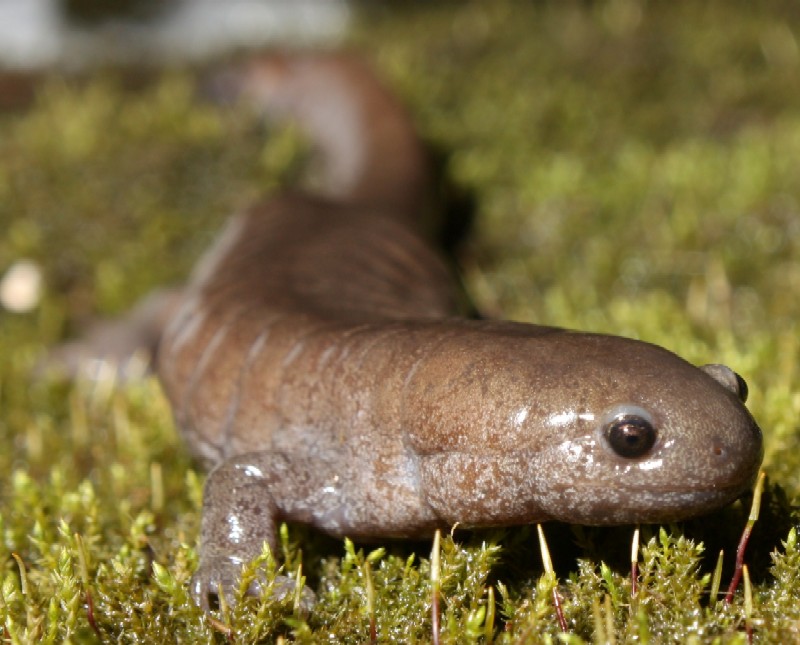
|
Be on the lookout for the streamside salamander! These rare salamanders have not been seen in Nashville since the 1960s, and there are only a few known populations left in the entire state. Finding a new population of them would be very significant. Dr. John Niedzwiecki and his students from Belmont University are busy this spring searching streams across Tennesse for any undiscovered populations. These large dark salamanders breed in January and February, depositing their eggs on the underside of large flat rocks. Finding their eggs is the easiest way to detect them. Each egg is about half an inch wide and jellylike, with many deposited under a single rock. The larvae hatch and grow up in the stream (like frog tadpoles, but carnivorous) though adults live most of their lives on land in burrows.
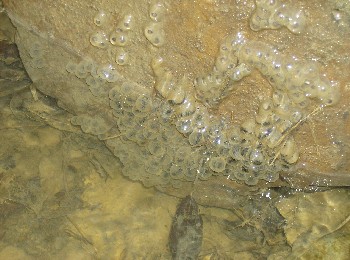
|
|
A. barbouri egg mass under rock, photo by Steve Murphree. Click to enlarge.
|
Streamside salamanders are members of the Mole-salamander family (Ambystomatidae), so called because of their habit of living in mole (and other small mammal) tunnels, often up to a few meters under ground. Related species include marbled salamanders (A. opacum), spotted .salamanders (A. maculatum), and Jefferson salamanders (A. jeffersonianum). In latin, Amby means "a cup" and stoma means "mouth." This refers to their wide cup-shaped mouths designed for gobbling up invertebrates and maybe the other larval amphibians that they eat when they themsleves are larvae. (These wide mouths also make them look like they're constantly grinning.) Most of their adult lives (perhaps 6-15 years), are spent underground in well defined territories. The other mole salamanders are known to partake in mass migrations during breeding season in which each individual crawls out of his/her mole tunnel to walk hundreds of meters downhill to a particular breeding pond. After a week or so, the salamanders disperse from the pond, navigating their way back to the same home mole tunnel way up on the hill. While streamside salamanders may not participate in the same dramatic migrations, they likely have similar navigational abilities, and they sure would be neat to see!
Below are photos of Ambystomatid salamanders NOT from West Meade, however spotted and marbled salamanders have been found not too far away. For more on our local salamanders, go to: Tennessee Salamanders
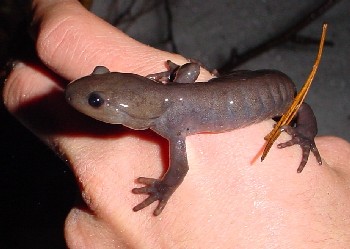
Jefferson salamanders (Ambystoma jeffersonianum) look similar to streamside salamanders.
photo by
Noah Charney
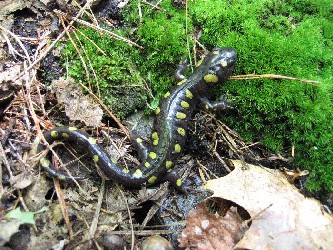
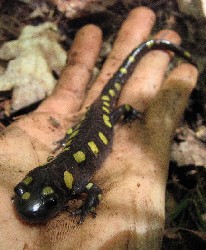
Spotted salamander (Ambystoma maculatum)
photo by
Noah Charney
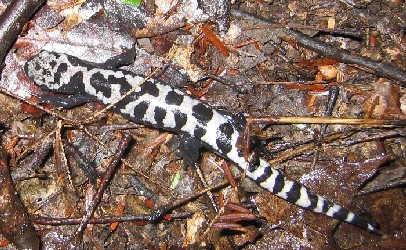
Marbled salamander (Ambystoma opacum)
photo by
Noah Charney
|





